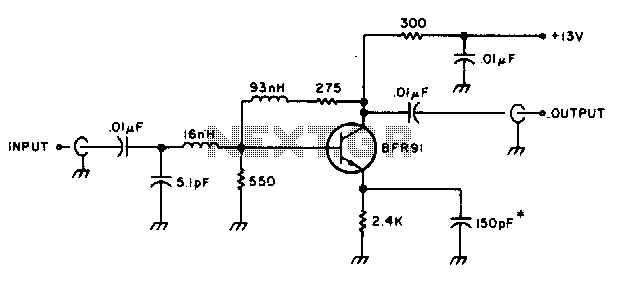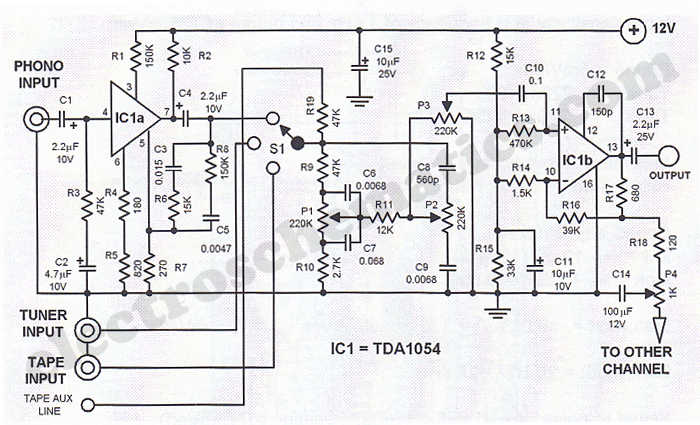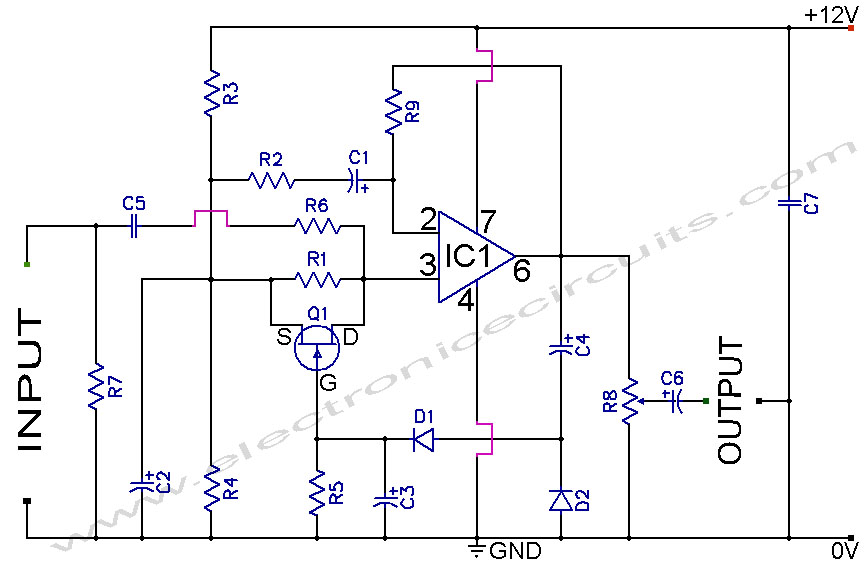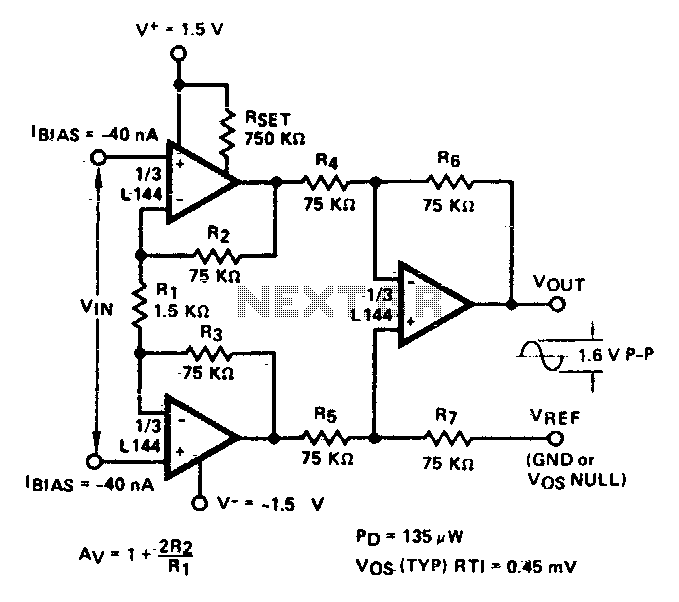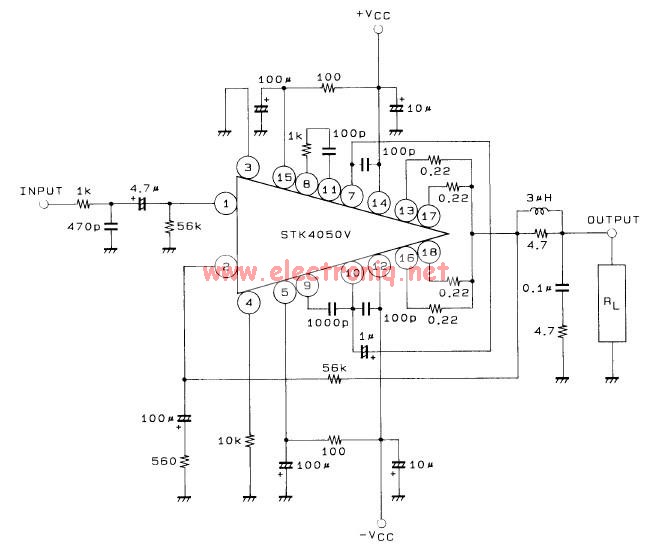
RF amplifier and filter for 70 MHz
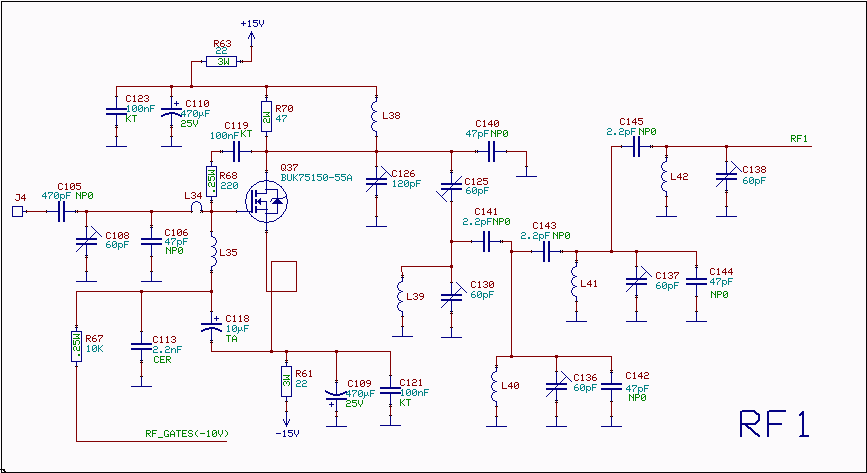
The RF amplifier utilizes noiseless feedback via the drain-gate capacitance, incorporating an inductor in the source lead to achieve the required 90-degree phase shift between the gate voltage and channel current.
The RF amplifier is designed to enhance signal strength while maintaining signal integrity, particularly in high-frequency applications. By employing noiseless feedback through the drain-gate capacitance, the amplifier minimizes noise contributions that may affect performance. This feedback mechanism is crucial for stabilizing the amplifier's gain and improving linearity.
The inclusion of an inductor in the source lead plays a vital role in creating the necessary 90-degree phase shift between the gate voltage and the channel current. This phase shift is essential for ensuring optimal operation of the amplifier, particularly in applications where phase relationships are critical, such as in RF signal processing and transmission.
The circuit typically consists of a transistor configured in a common-source arrangement, where the input signal is applied to the gate terminal. The drain-gate capacitance provides a feedback path that influences the behavior of the amplifier, while the inductor in the source lead serves to manage the current flow and enhance the amplifier's frequency response.
In practical implementations, careful selection of the inductor value and the characteristics of the feedback network will determine the amplifier's bandwidth, gain, and overall performance. The design must also account for parasitic capacitances and inductances that may arise in high-frequency applications, as these can significantly impact the amplifier's efficiency and stability.
Overall, this RF amplifier design represents a sophisticated approach to achieving high performance in signal amplification, leveraging feedback mechanisms and inductive components to optimize phase relationships and minimize noise.The RF amplifier uses noiseless feedback through the drain-gate capacitance with an inductor in the source lead to provide the necessary 90 degree phase shift between gate voltage and channel current. 🔗 External reference
The RF amplifier is designed to enhance signal strength while maintaining signal integrity, particularly in high-frequency applications. By employing noiseless feedback through the drain-gate capacitance, the amplifier minimizes noise contributions that may affect performance. This feedback mechanism is crucial for stabilizing the amplifier's gain and improving linearity.
The inclusion of an inductor in the source lead plays a vital role in creating the necessary 90-degree phase shift between the gate voltage and the channel current. This phase shift is essential for ensuring optimal operation of the amplifier, particularly in applications where phase relationships are critical, such as in RF signal processing and transmission.
The circuit typically consists of a transistor configured in a common-source arrangement, where the input signal is applied to the gate terminal. The drain-gate capacitance provides a feedback path that influences the behavior of the amplifier, while the inductor in the source lead serves to manage the current flow and enhance the amplifier's frequency response.
In practical implementations, careful selection of the inductor value and the characteristics of the feedback network will determine the amplifier's bandwidth, gain, and overall performance. The design must also account for parasitic capacitances and inductances that may arise in high-frequency applications, as these can significantly impact the amplifier's efficiency and stability.
Overall, this RF amplifier design represents a sophisticated approach to achieving high performance in signal amplification, leveraging feedback mechanisms and inductive components to optimize phase relationships and minimize noise.The RF amplifier uses noiseless feedback through the drain-gate capacitance with an inductor in the source lead to provide the necessary 90 degree phase shift between gate voltage and channel current. 🔗 External reference
